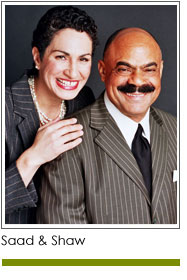 It’s all about leadership and team building. You’ve heard the refrain, but what does it mean? In terms of nonprofit fundraising there can be no greater mandate than leadership and teamwork. Scarce funding for staff positions, stiff competition for the philanthropic dollar, and an abundance of wishful thinking leaves nonprofits at risk of not meeting their fundraising goals. Building and supporting a volunteer-led fundraising team is one way out of the vicious cycle imperiling too many organizations.
It’s all about leadership and team building. You’ve heard the refrain, but what does it mean? In terms of nonprofit fundraising there can be no greater mandate than leadership and teamwork. Scarce funding for staff positions, stiff competition for the philanthropic dollar, and an abundance of wishful thinking leaves nonprofits at risk of not meeting their fundraising goals. Building and supporting a volunteer-led fundraising team is one way out of the vicious cycle imperiling too many organizations.
Your fundraising team should be comprised of leaders who are committed to ensuring your nonprofit has the money and resources it needs to deliver on its mission. It should include your volunteers, staff, executive leadership and board members. All members should work from a fundraising plan. You can have a simple plan or a complex plan. The most important thing is to work from a plan with agreed upon financial goals, timeframes, and defined roles and responsibilities. For a team to function, everyone has to know their role, and be qualified to fill it. Invite people to join your leadership team based on their understanding of what you are trying to achieve and how well they can help implement your plan.
Your team will set the tone, policy, and direction of your fundraising and monitor its progress. The committee should be led by a fundraising chair or co-chairs. These volunteers should be supported by the institution’s chief development officer and executive director. If you don’t have a fundraising chair, you need one. Take the time to review your fundraising plan, identify who could best help you meet your goals, and then find the right person to talk with your potential chair, inviting him to provide leadership. Be sure to show him your fundraising plan: people are more likely to say yes when they see you have a plan in place to meet your goal.
Other potential members for this committee include board members, current major donors, community and business leaders, key stakeholders, your finance director, executive director, development director and program staff.
Your fundraising chairs should convene and lead your monthly meetings. Team members should report on specific actions they have taken, solicitations, proposal submissions, and new potential donors and funders who have been identified. Staff should provide reports showing progress against goal, number of gifts received, average size of gift, largest gift, and specific information that allows the team to make proactive fundraising management decisions.
Team meetings shine a light on what people are doing and not doing. It holds board members, staff and volunteers accountable to each other. It takes away excuses and when things are going well it creates an excitement and momentum that is contagious.
Raising money is too important to go alone. Build and nurture your team.
Excerpted from “Prerequisites for Fundraising Success” a new book from Mel and Pearl Shaw, available from Amazon.com. They provide fundraising counsel to nonprofits.
This is the second of a two-part series. © Mel and Pearl Shaw











